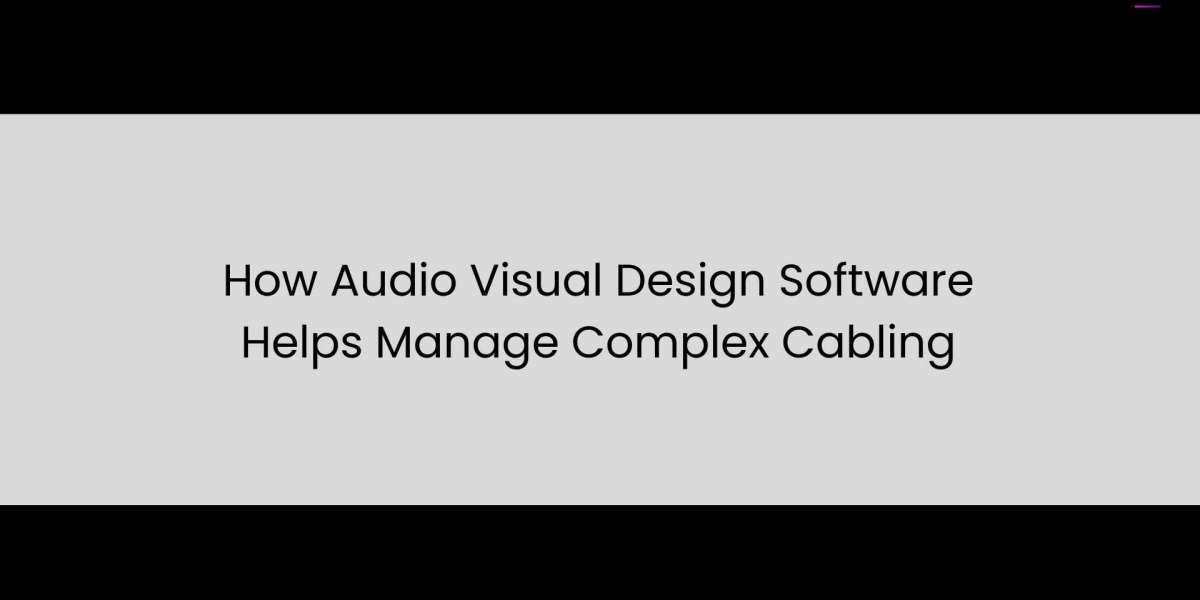XTEN-AV is leading the way in providing AV professionals with powerful tools to simplify complex design challenges. One of the most demanding aspects of AV system installation is managing cabling for large or intricate projects. Whether it is corporate boardrooms, auditoriums, educational facilities, or multi-room installations, cabling can become highly complex, involving multiple types of audio, video, network, and control signals. Audio Visual Design Software provides consultants and integrators with the tools to plan, visualize, and manage cabling effectively, reducing errors, saving time, and improving overall system performance.
Introduction
Cabling is the backbone of any AV system. It ensures that all devices, from displays and cameras to microphones and speakers, communicate reliably. In complex installations, poorly planned cabling can lead to signal interference, equipment failure, troubleshooting challenges, and increased installation costs.
Traditionally, AV cabling was documented using spreadsheets, hand-drawn schematics, or disconnected design tools. These methods are prone to errors, making it difficult to manage larger systems efficiently. Audio Visual Design Software transforms this process by integrating cabling management into the design workflow. Consultants can now plan every connection accurately, visualize the full layout, and generate automated documentation for installers.
Planning Cabling in AV Systems
Proper planning is essential for managing complex cabling. Audio Visual Design Software allows AV professionals to:
Map all connections between devices in a system.
Identify cable types and lengths required for each connection.
Ensure compatibility between different signal types, such as HDMI, SDI, Dante audio, or control signals.
By planning cabling during the design phase, consultants can avoid last-minute issues, reduce installation errors, and ensure a professional and reliable AV system.
Visualizing Cable Routes
One of the key benefits of Audio Visual Design Software is the ability to visualize cable routes in both 2D and 3D. This allows designers to:
See how cables run through walls, ceilings, and conduits.
Avoid conflicts with structural elements, HVAC systems, and electrical wiring.
Optimize routing to minimize cable length and signal loss.
Visualization also helps clients and installation teams understand the complexity of the system and facilitates approvals for construction or renovation projects.
Managing Multiple Cable Types
Modern AV systems often involve a variety of cable types, including:
HDMI and DisplayPort for video
XLR, TRS, and Dante for audio
Ethernet and fiber for network connectivity
RS232, IR, and control cables for automation systems
Audio Visual Design Software can categorize and track these different cable types, ensuring that each connection meets technical requirements. It also allows consultants to generate separate diagrams for each cable type, simplifying installation and troubleshooting.
Automation and Error Reduction
Manual cabling documentation is time-consuming and prone to errors. Audio Visual Design Software automates many tasks, including:
Generating wiring diagrams for each device
Calculating cable lengths based on room dimensions and device placement
Highlighting potential conflicts or missing connections
Automation reduces the likelihood of mistakes, ensures consistency across projects, and allows consultants to focus on optimizing system performance rather than manually tracking every cable.
Integration with Device Libraries
Audio Visual Design Software often includes extensive device libraries with technical specifications. This helps consultants:
Select devices that support required cable types and signal standards
Plan appropriate connections for new equipment in existing systems
Ensure that control and network integration is compatible across all devices
By integrating device information with cabling design, consultants can create comprehensive plans that are both practical and reliable.
Documentation for Installation Teams
Clear documentation is critical for successful cabling management. Audio Visual Design Software automatically generates professional schematics, connection diagrams, and cable schedules. These documents:
Guide installers during the physical setup of the AV system
Reduce errors and installation time
Serve as references for troubleshooting and future upgrades
Accurate documentation also ensures that clients have a complete understanding of the system, including cable routing, device connections, and signal paths.
Facilitating Scalable and Modular Designs
Complex AV systems often require scalability and modularity. Audio Visual Design Software helps consultants design cabling systems that can grow with organizational needs. This includes:
Planning extra conduit space or cable pathways for future devices
Designing modular patch panels and signal distribution systems
Ensuring that additional equipment can be added without disrupting existing cabling
Scalable cabling designs reduce the need for costly retrofits and enable organizations to expand or upgrade systems efficiently.
Troubleshooting and Maintenance
Well-documented cabling designs also simplify troubleshooting and maintenance. Audio Visual Design Software allows consultants and technicians to:
Identify specific cable runs and their connected devices quickly
Track signal flow for troubleshooting issues
Update diagrams as the system evolves
This reduces downtime, improves system reliability, and ensures that AV systems continue to operate at peak performance.
Real-World Applications
Corporate Boardrooms
Large boardrooms often require multiple displays, microphones, and cameras. Audio Visual Design Software helps consultants plan cabling for audio, video, and control signals, ensuring that expansion or upgrades can be handled smoothly.
Educational Facilities
Lecture halls and classrooms have complex AV needs, including projectors, speakers, microphones, and recording devices. Cabling software allows for clear documentation and efficient installation across multiple rooms.
Entertainment Venues
Concert halls, theaters, and event spaces require precise signal routing to support audio and video performance. AV Design Software helps visualize cable paths, avoid interference, and simplify installation for large-scale events.
Multi-Site Deployments
Organizations with multiple offices or campuses can standardize cabling practices using Audio Visual Design Software, ensuring consistency, compatibility, and easier maintenance across locations.
Conclusion
Managing complex cabling is a critical aspect of successful AV system design. Audio Visual Design Software provides consultants and integrators with the tools to plan, visualize, document, and automate cabling for even the most intricate installations. By leveraging these tools, AV professionals can reduce errors, save time, optimize system performance, and create scalable solutions that grow with organizational needs.
XTEN-AV continues to lead the industry by offering software that simplifies cabling management, enhances accuracy, and supports the design of reliable, high-performance AV systems. For consultants, integrators, and engineers, adopting Audio Visual Design Software is no longer optional but a necessity for delivering professional, future-proof AV solutions.
Read more: https://sites.google.com/view/avsolutionhub/blog/top-av-system-design-software-for-large-venues








